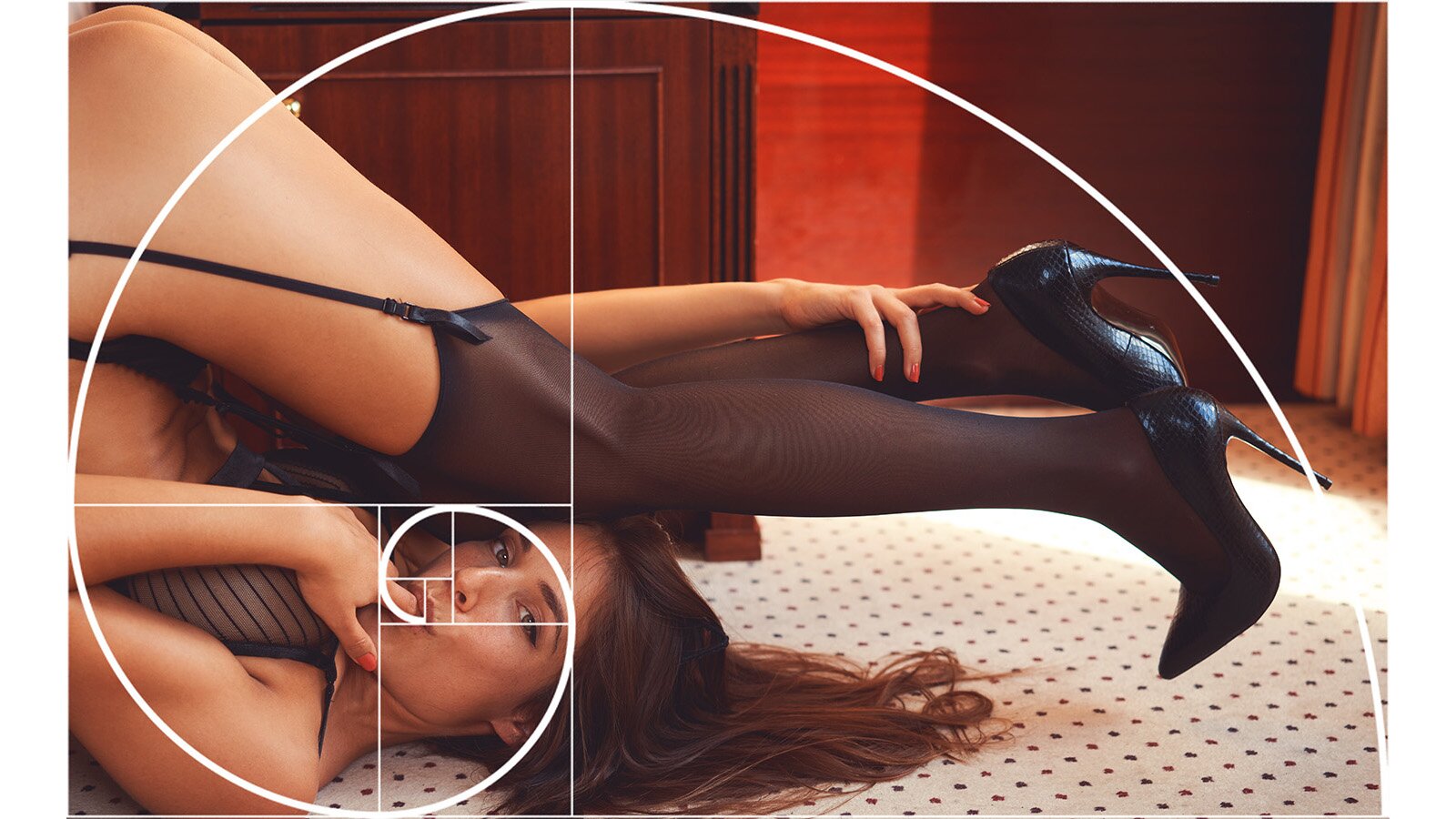The Fibonacci sequence describes an infinite sequence of natural numbers. The sum of two consecutive numbers results in the following number immediately afterwards: 0, 1, 2, 3, 5, 8, 13, ...
Amazingly, this is a growth pattern in nature, which can be seen, for example, in the arrangement of the seeds in a sunflower. Rabbits are also reproducing according to this principle.
The further you progress in the sequence of these numbers, the closer you approach the golden ratio, e.g. 55:34 ≈ 1.6176.

This means, humans are familiar with the Fibonacci sequence and the golden ratio as these are well-known proportions that occur in nature. We perceive them as harmonious. That's how I learned this in the Academy of Visual Arts.
From my point of view, this myth can be doubted, though, because if you do mathematical calculations, you quickly discover that even da Vinci's "homo vitruvianus" only has similar proportions and the golden ratio is more wishful thinking than reality.

What does this mean for our composition rules?
The reverse conclusion that it doesn't really matter in what proportions objects are placed in a motif would of course be wrong. A proportion of the golden ratio is indeed perceived as harmonious by us humans. We just don't take the exact proportions very seriously and have a high tolerance limit.
The good old Rule of Thirds does this pretty well. Put simply, it's boring to always place a person in the center of the frame. We want to be surprised. An exciting series of images includes variations in the composition. And as a rule of thumb, you can divide the picture into three columns and then place your motif either on the left or right edge of the middle column.

Many of the modern cameras offer guidelines for this. You can view a grid displaying e.g. the Rule of Thirds while looking through the viewfinder. Alternatively, you can refine this later when cropping the image in post. In any case, it is helpful to take both composition and proportions into account when taking photos.
But when I see photos with a Fibonacci spiral over the subject to celebrate the great composition, I roll my eyes. This is silly. No photographer thinks about how a spiral will lead the eye through an image while taking pictures. Not even the pedants do this.

It is much more important to always observe the whole picture and to see the relationship between things. This thinking about the composition of a picture fascinates me a lot and I apply it every time I shoot. To be honest, there is no single photo by me where I haven't thought about the composition before pressing the shutter release.
From my point of view, composition theory is fundamentally important. It creates tension in the image structure, e.g. by including a foreground and background and thus creating the impression of depth in a photograph. Or just making sure that no object grows out of your subject's head like an antenna. Having a balance between larger and smaller objects and the things that you show and hide in a frame.
